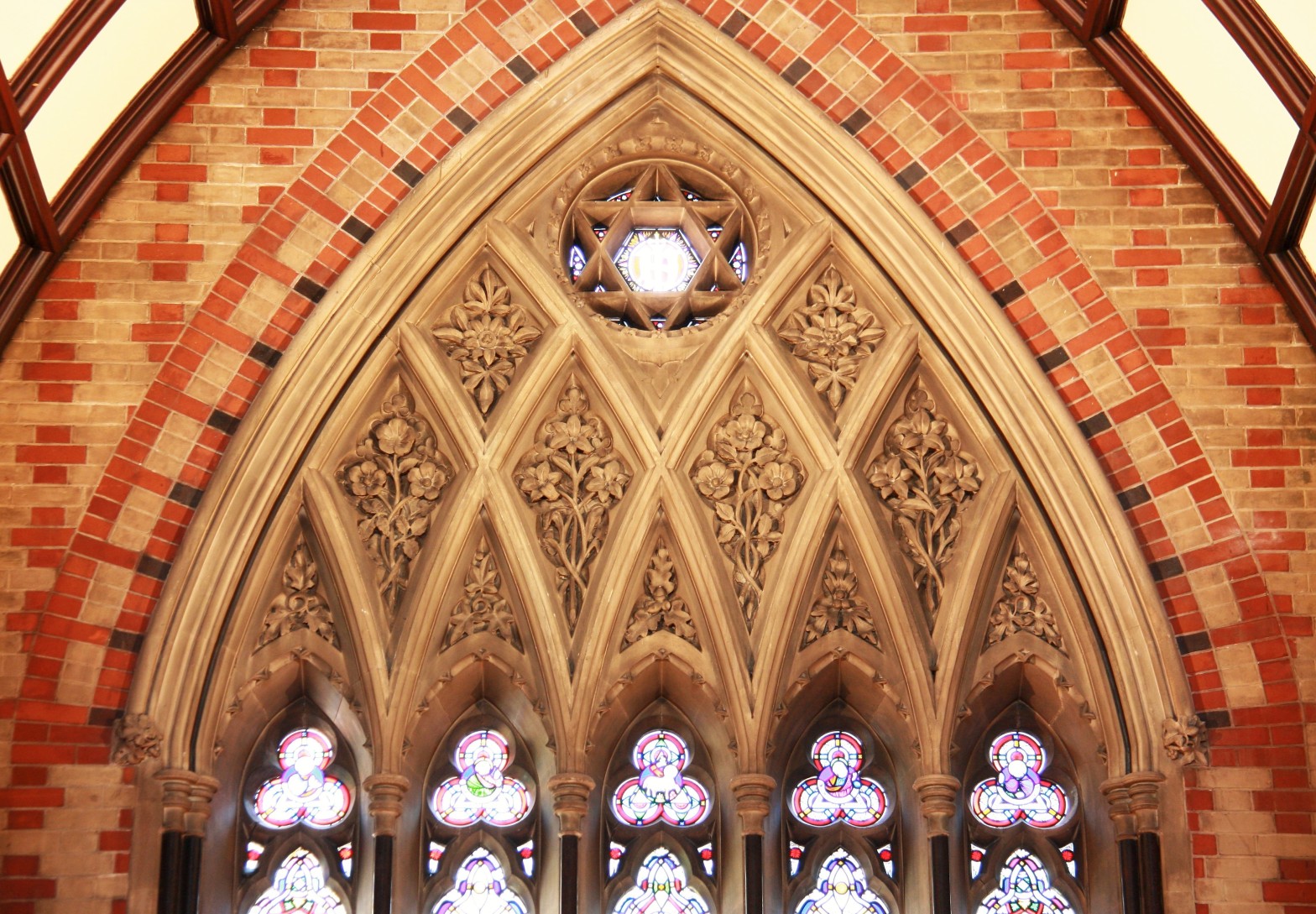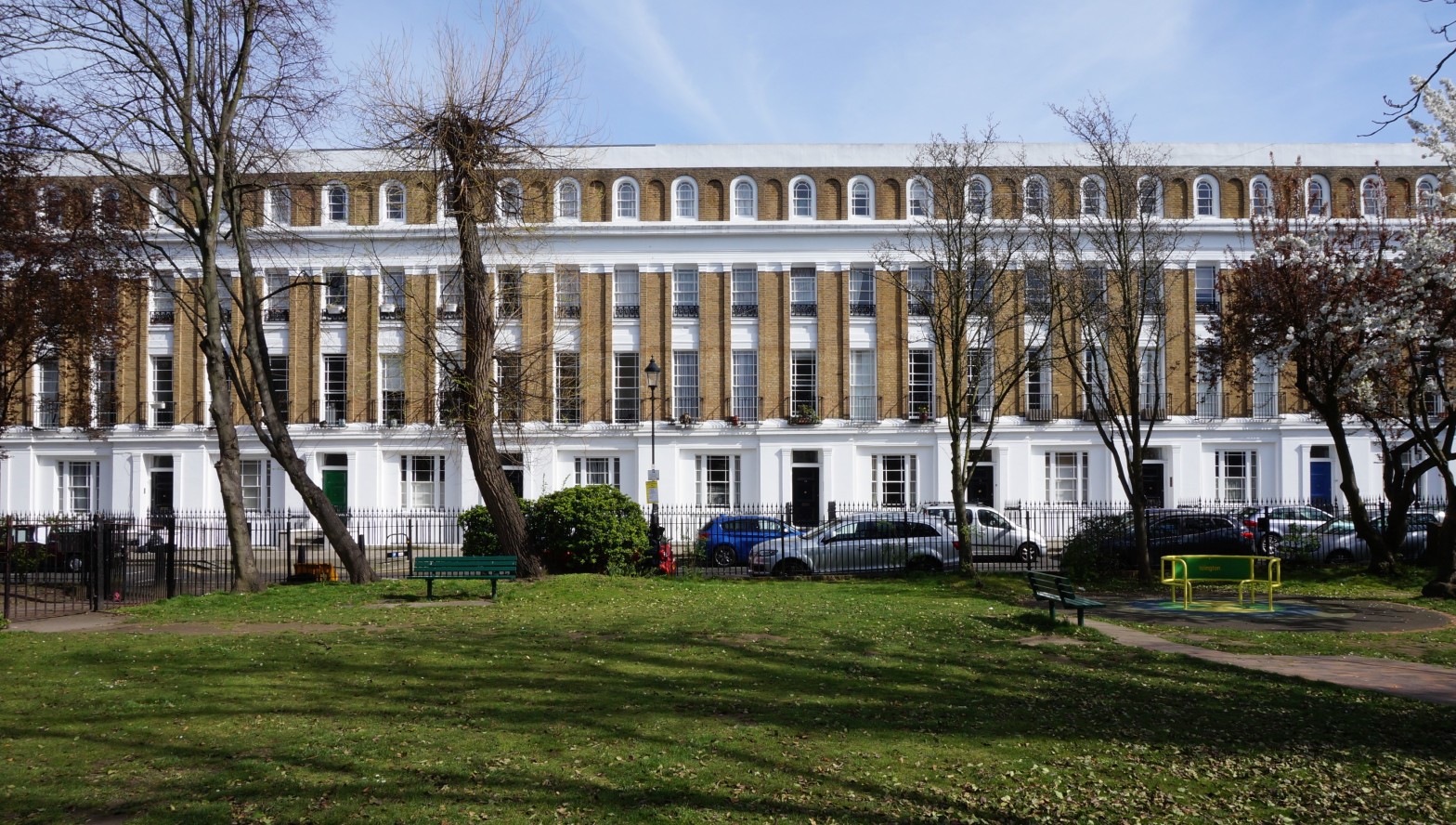This is a figure who deserves a long and detailed write-up. That he is not going to get one in this post is the result of a happy circumstance, which is that this blog is about to be supplanted – and on this occasion, by its own author. Last week I received the news fromContinue reading “Joseph Peacock – Rogue to the family business”
Tag Archives: Domestic architecture
Robert Lewis Roumieu: progressive or prankster?
One is the former London office of a firm that produced vinegar and fortified wines. The other is a speculative development of townhouses aimed at the affluent middle classes. Fairly mundane projects typical of the 19th century, one might think; typical, indeed, of hundreds such up and down the country, brought into being by theContinue reading “Robert Lewis Roumieu: progressive or prankster?”
Joseph Clarke (1819/20-1888): an unexpectedly deft safe pair of hands
Today’s post forms something of a pendant to the preceding post on Henry Woodyer, not least because it takes in the remarkable church of SS Peter and Paul in Foxearth, Essex. It deals with an architect who, like Woodyer, was active chiefly in the Home Counties. Again like Woodyer, he specialised in ecclesiastical work –Continue reading “Joseph Clarke (1819/20-1888): an unexpectedly deft safe pair of hands”
J.P. Seddon at Birchington-on-Sea: from ‘Vigour and Go’ to Sweetness and Light
The subject of this post is a particular favourite of mine. Over the course of his long life, he was hugely industrious, not just in architecture but also in the applied arts – furniture, ceramics, stained glass, wall and ceiling painting, textiles and metalwork. Active as an author, polemicist and lecturer, he wrote almost prolificallyContinue reading “J.P. Seddon at Birchington-on-Sea: from ‘Vigour and Go’ to Sweetness and Light”
The Gothic horrors of a Victorian worthy – Charles Buxton and Foxwarren
The roots of the Gothic Revival extend as far into literature as they do into archaeology. The endeavours of one of its key progenitors, Horace Walpole (1717-1797), to recreate the Middle Ages in brick, wood, plaster and stone through his remodelling of Strawberry Hill were inextricably bound up with his evocations of the Middle AgesContinue reading “The Gothic horrors of a Victorian worthy – Charles Buxton and Foxwarren”
A house and a manifesto: E.B. Lamb’s Fawkham Manor
Word reached me at the end of last month of an exciting new addition to the National Heritage List, Historic England’s register of all the listed sites nationwide. On 26th November 2020, Fawkham Manor of 1866-1867 near Brands Hatch in northwest Kent became a Grade II-listed building. Far more than the date makes it ofContinue reading “A house and a manifesto: E.B. Lamb’s Fawkham Manor”
An obscure figure finally gets his due
I am delighted to announce that I am the winner of this year’s annual Stephen Croad Essay Prize of the Ancient Monuments Society. My entry, ‘From Georgian antiquarian to Victorian rogue’, was an account of the life and work of the architect Edward Lushington Blackburne (1803-1888). It is, to the best of my knowledge, theContinue reading “An obscure figure finally gets his due”
Bristly, stripy and muscly – the architecture of Poundley and Walker
Several of the architects featured so far in this blog were, for all the distinctiveness of their architecture, specialists in a particular building type, be it churches, country houses or non-conformist chapels. Where 19th century architects were professionally more omnivorous, they tended to cut their stylistic cloth according to the commission. Though we think ofContinue reading “Bristly, stripy and muscly – the architecture of Poundley and Walker”
Quality in obscurity: the surprising career of R.J. Withers
The subject of today’s post is the sort of architect whose biography explains at a quick glance why he has been largely overlooked by architectural historians. My hope is that a quick glance at his delightful and engaging work will be enough to show why that neglect is undeserved. Robert Jewell Withers (1824-1894) built noContinue reading “Quality in obscurity: the surprising career of R.J. Withers”
Amateur extravagance in the Welsh Marches
I have long fancied that one of the principal drivers of architectural development in Victorian England was boredom. Young men who had come into contact with the ideas of, say, Ruskin or the Tractarian Movement while up at Oxbridge or in the capital then found themselves out in the sticks on inheriting the family estateContinue reading “Amateur extravagance in the Welsh Marches”









